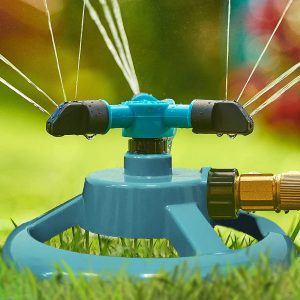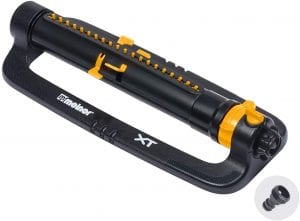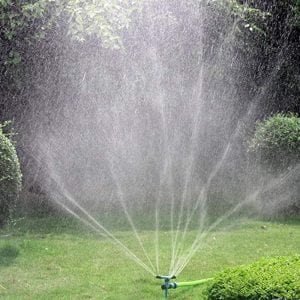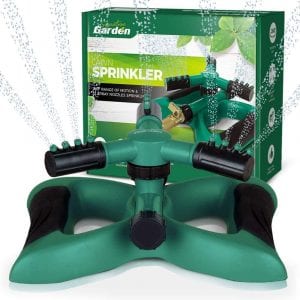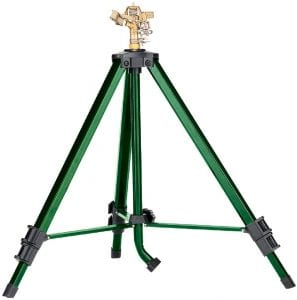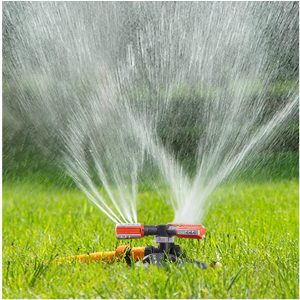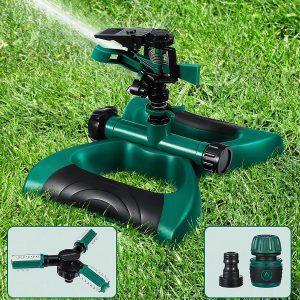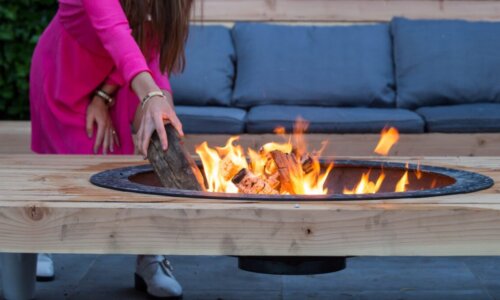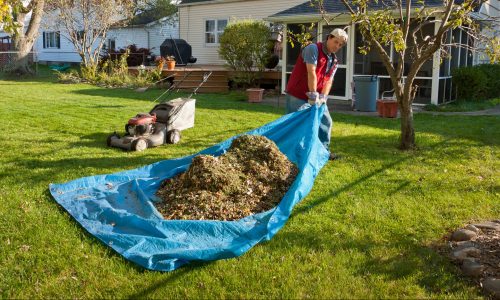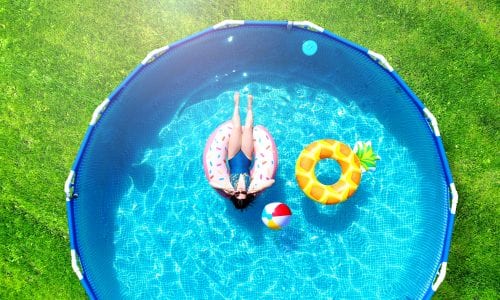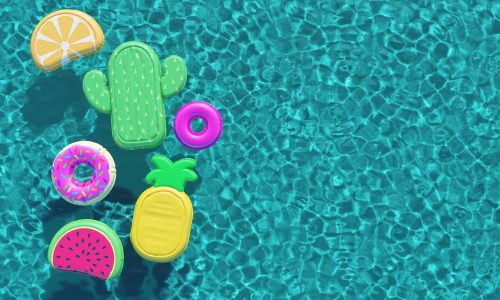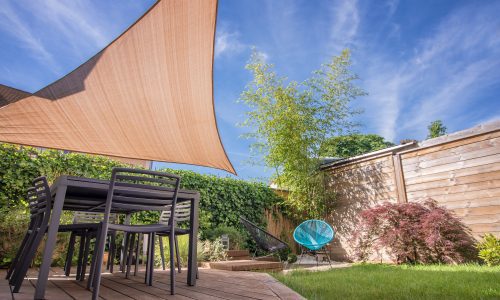The Best Lawn Sprinkler
We looked at the top 9 Lawn Sprinklers and dug through the reviews from 56 of the most popular review sites including and more. The result is a ranking of the best Lawn Sprinklers.
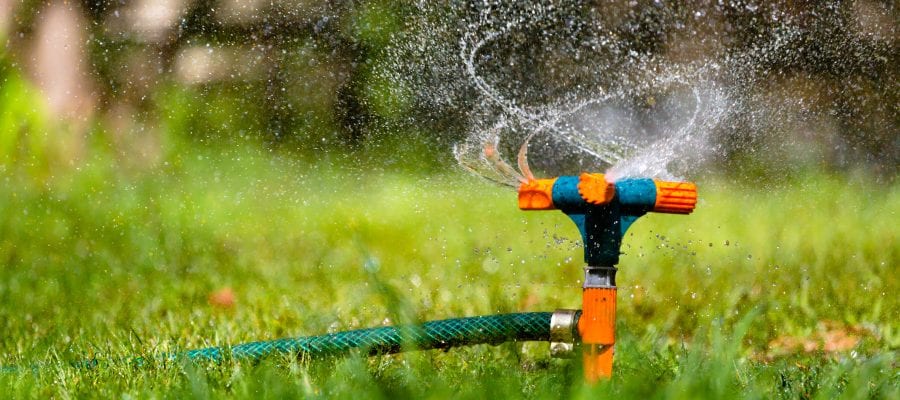
Our Review Process
Don't Waste Your Money is focused on helping you make the best purchasing decision. Our team of experts spends hundreds of hours analyzing, testing, and researching products so you don't have to. Learn more.
Our Picks For The Top Lawn Sprinklers
- 1. Aqua Joe SJI-OMS16 Oscillating Lawn Sprinkler
- 2. Trazon Rotating 360-Degree Lawn Sprinkler
- 3. Melnor 65078-AMZ XT Turbo Quick Connect Oscillating Lawn Sprinkler
- 4. Signature Garden 360 Rotation Three-Arm Lawn Sprinkler
- 5. Orbit 58308Z Brass Impact Tripod Base Lawn Sprinkler
- 6. WOVUU 360 Rotation Garden & Lawn Sprinkler
- 7. GrowGreen Rotating Lawn Sprinkler
- 8. Homemaxs 3-Arm & Impact Lawn Sprinkler
- 9. Kadaon 360 Rotating Garden & Lawn Sprinkler
If you have a larger landscape to cover, you'll want to go with this lawn sprinkler. It's capable of covering yards of up to 3,600 square feet. The sprinkler's best feature is it's ability to be customized to one of several coverage patterns.
Wide CoverageYou'll love that this lawn sprinkler is both leak and clog-resistant.
Irrigating your garden has never been easier than with this lawn sprinkler. It features 360-degree rotation to ensure all of your plants, flowers and grass are equally watered. It's also constructed from a high-quality ABS plastic that won't rust or break apart.
Two Attachment TypesThis lawn sprinkler is compatible with 3/4-inch US standard and 1/2-inch quick connectors.
This oscillating sprinkler has 20 precision nozzles that help you water areas of up to 4,500 square feet. You have three options for adjusting it to cover the width and height you want, helping you handle even narrow areas like garden beds. Setup is easy, thanks to an included connection adaptor.
Versatile PickThis lawn sprinkler can adjust to cover either a wide area or a narrow one, making it ideal for watering areas like garden beds.
You'll get multiple project connections with this lawn sprinkler, allowing you to handle a variety of lawn sizes and project types. With each arm, you get four nozzles, giving you more range. The patented design helps save water by allowing you to direct the flow of water to exactly where you need it.
Child-Friendly DesignThis sprinkler is built to with no sharp edges or parts, so it's perfect for setting up in your yard for children to play in during warm weather.
Buying Guide
Unless you happen to live in an area that gets the perfect amount of rain, you may need to use a sprinkler to water your lawn on a fairly regular basis. In many areas, this is only necessary during certain months of the year, as cold weather causes grass to go dormant and spring and autumn often have enough rain.
One look at your grass may tell you it needs some water, but there are some other telltale signs: for example, your footprints should disappear quickly when you walk across it. If they don’t, that means your grass lacks the moisture necessary to bounce back. Over time, you’ll learn when conditions have been dry long enough that you need to add some sprinkler power. (Watering your lawn when it doesn’t need it can be bad for it as well.)
Ideally, your home has a built-in sprinkler system that you can simply activate with the flip of a switch. But such a system isn’t required to water your lawn. A good sprinkler can be enough to do the job, particularly if you have a small to midsize yard. But even for bigger spaces, you can buy sprinklers that let you hook up multiple hoses across a wide expanse to broaden your reach.
Why we recommend these lawn sprinklers?
Products Considered
Products Analyzed
Expert Reviews Included
User Opinions Analyzed
Our experts reviewed the top 9 Lawn Sprinklers and also dug through the reviews from 56 of the most popular review sites including and more. The result is a ranking of the best of the best Lawn Sprinklers.
DWYM is your trusted roduct review source. Our team reviews thousands of product reviews from the trusted top experts and combines them into one easy-to-understand score. Learn more.
The Best Bang For Your Buck
Kadaon 360 Rotating Garden & Lawn Sprinkler
Key Takeawy
You'll get multiple project connections with this lawn sprinkler, allowing you to handle a variety of lawn sizes and project types. With each arm, you get four nozzles, giving you more range. The patented design helps save water by allowing you to direct the flow of water to exactly where you need it.
What other experts liked
What other experts didn't like
What to Look For
- The time of day you water plays a direct role in the health of your lawn. The best time is before 10 a.m. in the morning. This allows it to really soak into the grass and roots before the sun completely evaporates it. Any evening watering should be done between 4 p.m. and 6 p.m. Too late and water will sit on the grass, soil and roots for hours without sunlight to evaporate it, potentially leading to disease.
- The first thing to look at when buying a sprinkler is reach. You’ll need one that can cover the area without you having to move it around constantly.
- Some sprinklers have weights built in that will keep them from tipping over during operation.
- If you’re watering a lawn you’ve never watered before, keep an eye on the soil to make sure you stop when it has enough moisture. Every 15 minutes, use a screwdriver to determine how deep the water has soaked in. Once it reaches 6 inches, note the time and turn the sprinkler off. This is the length of time you’ll need to water in the future.
- Chances are, the grass in your yard matches the type of climate you live in. Zoysia, St. Augustine, Bermuda and centipede grasses can handle drought better than other kinds, so you may be fine going months without rain.
More to Explore
Americans spend a great deal of time developing and maintaining a beautiful lawn. But that wasn’t always the case. When European colonists arrived, they found a landscape altered by indigenous people that was perfect for hunting and fishing. By the 17th century, though, settlers needed grass and clover seeds in order to raise animals. The early deliveries of grass from Europe were far from perfect, with plenty of weeds packed into them. As more grass was imported, certain areas of the U.S. gravitated toward a handful of certain types of grass, while other areas gravitated toward others, eliminating native grasses and leading to the variety that’s still seen today.




